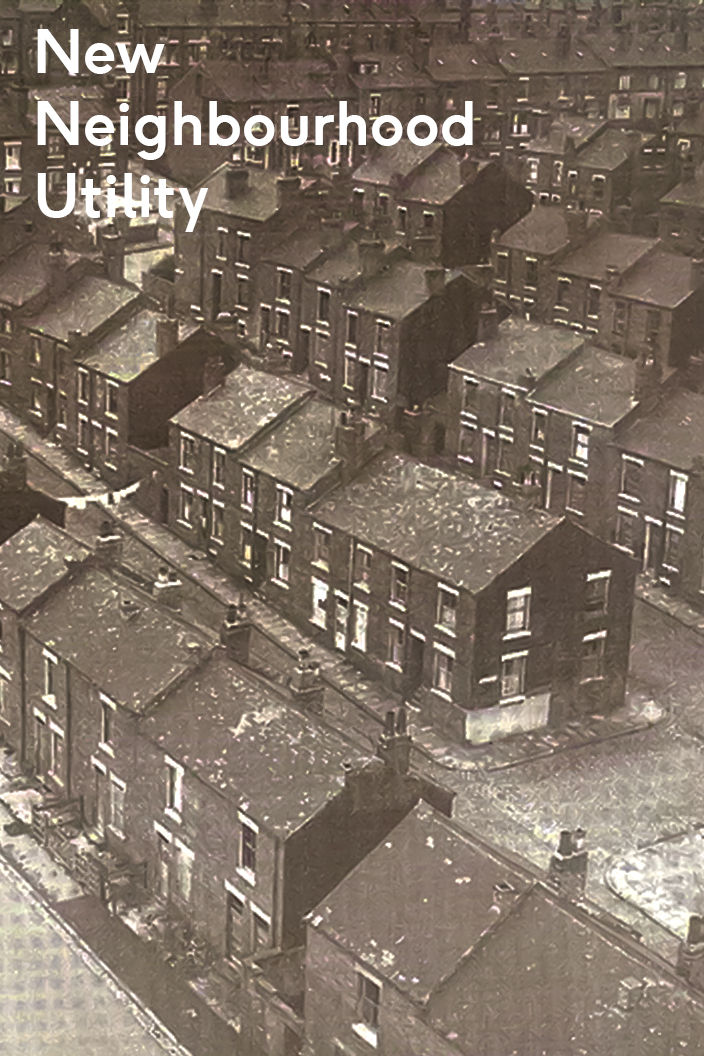
New Neighbourhood Utility
Back to back houses and Bin yards
The study explores potential uses to re-appropriate the former washing areas associated with back to back housing to invent a new neighbourhood utility.
Using participatory practice to engage with the community to determine relevance, the intention is to re-introduce a shared community benefit. The miss-use of these neglected spaces contributes to the detriment and decline of the neighbourhood. Substance abuse and discarded waste establish an environmental health hazard.
Can collective action transform waste and waste space into a valuable resource, offering environmental, health economic and social benefits to a deprived neighbourhood?
It is envisaged that several different functions and uses; which are not possible within the home, will add to the quality of life for the neighbourhood, establish a sense of community/ shared activity and contribute to health benefits, food knowledge, and general well-being.
This research engages with an area of 96 back to back terraces in Harehills, an inner city area approximately one mile north east of Leeds City Centre. Twelve privately owned undevelopable sites are available for appropriation.
Back to Back terraces once benefitted from shared spaces which provided a number of utility functions. these spaces provided toilets, washing and drying areas and latterly refuse areas. As plumbing and drainage became integrated into the houses the need for shared toilet blocks became redundant. With the introduction of utility appliances such as washing machines and tumble dryers the use of theses community spaces has declined. Such activities take place within the home and there is increasingly no reason to share.
The area of Harehills, housing typology, tenure, residential mix, demographic, social mix, problems and fringe city location are common across many northern cities. The results of this research will be of relevance to local communities, local government, environmental health and well-being professionals. The intention is to produce a pilot project and toolkit which can be utilised as a strategy to reuse leftover urban space through the setting up of an enabling infrastructure that is taken over by local residents and transformed into self-managed spaces.
Group Ginger architects were approached by a land owner to come forward with a number of ideas demonstrating potential solutions for a series of sites in the residential area of Harehills Leeds. The parcels of land available were associated with the back to back housing and were previously used for washing areas, toilets and refuse areas. Our approach has looked at how these spaces might once again be utilised as a community benefit. NNU – New Neighbourhood Utility.
We would like to explore the potential benefit of re-introducing a shared community benefit or neighbourhood utility. Functions and uses which are not possible within the home but which will add to the quality of life for the neighbourhood. There might be several different utility benefits provided across the neighbourhood in each of the former bin yard areas. There are a wide variety of potential uses from community rooms and pocket parks to food and energy production. The combination of these potential uses can provide even further benefits than one alone, with each element utilising the input or output of another.
The Pilot Scheme sees the combination of an anaerobic digestor (AD), greenhouse and electric car hub. Greenhouses and polytunnels work well with AD by providing cost-effective insulation and a use for many of AD’s outputs including CO2, heat, fertiliser and soil conditioner. The AD/greenhouse combination can provide the full closed-loop food-to-energy-to-food cycle. Electricity can be used to support the use of a sustainable electric vehicle or alternatively be sold back to the energy provider to discount member’s bills.
Today, it is estimated that 7.3 million tonnes per year of food waste is generated by households in the UK for 2015. This is the equivalent to 112.6 kg per year for person in the UK, or just over 0.3 kg per person per day.
We could use this resource to help power and feed the community making it more sustainable and resilient. Managing food waste locally helps reduce pollution and greenhouse gas emissions associated with waste miles, and generates onsite, clean renewable energy.
Anaerobic digestion (AD) takes place in gas tight vessels, where naturally occurring anaerobic microorganisms flourish in the absence of oxygen. They enable the breakdown process that produces biogas and digestate, which is siphoned off for use as a fertiliser and soil conditioner.
Biogas is released during anaerobic digestion and captured for use as a clean fuel. Biogas is used to power CHP (combined heat and power) units, which generates electricity and heat.
The waste material is nutrient rich fertilizer which can be used in the green house and adjacent allotments. This will support local food growing, increasing community access to healthy organic produce. It can also be used for urban greening programmes to beautify urban areas and contribute to better air quality.
Photovoltaic panels in the green house roof provide a further source of electrical power. Power can be utilised to charge an electric car made available to the community via a community car club scheme. Any surplus power can be sold back to the national grid to offset energy bills of those community members that are part of the cooperative group.
If we are genuinely able to introduce a new network of neighbourhood utilities which benefit the community there would be an opportunity to explore grant funding for the initial capital costs. On going maintenance costs would need to be met through the proceeds generated through operation such that the new social enterprise isn’t reliant on grant support.